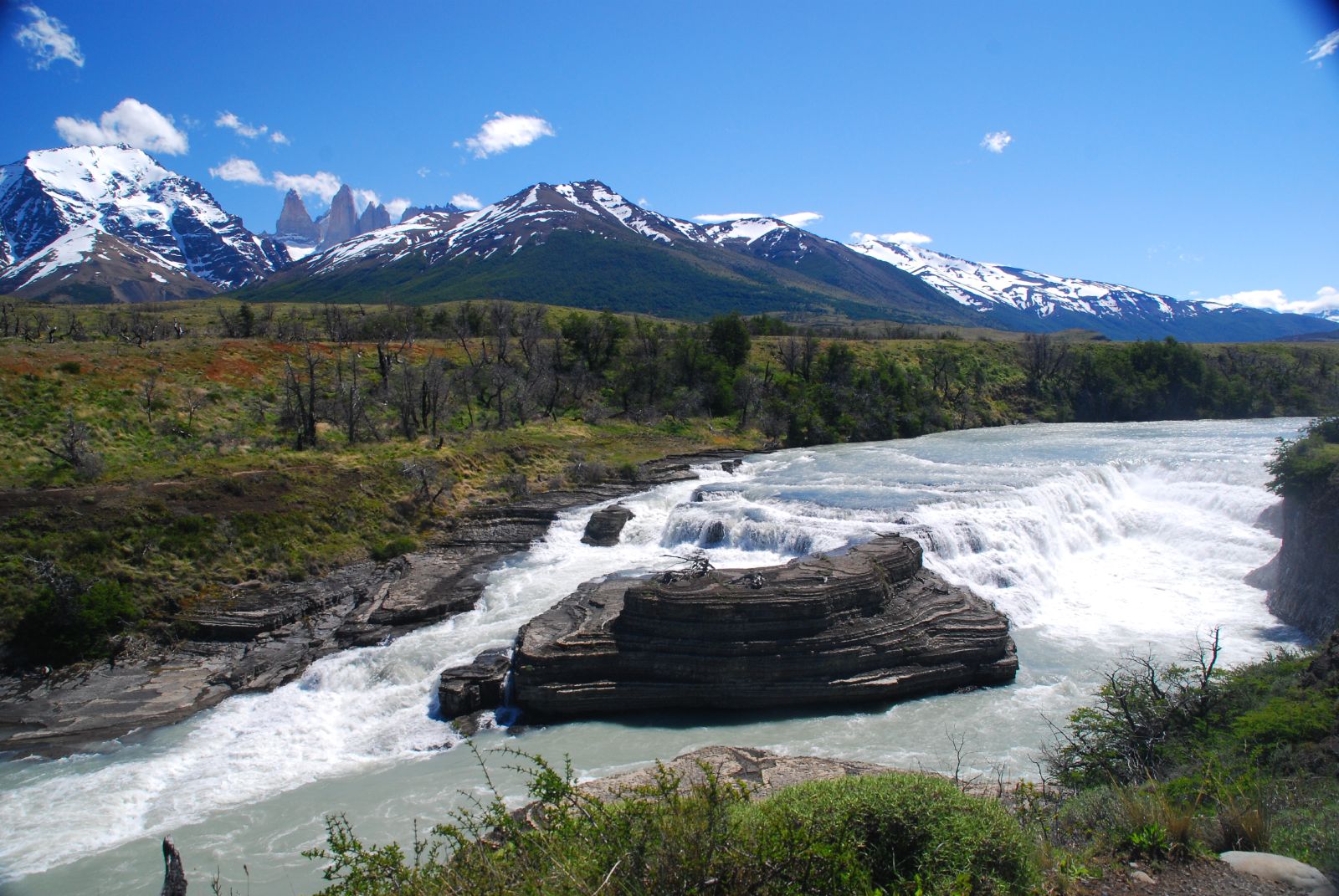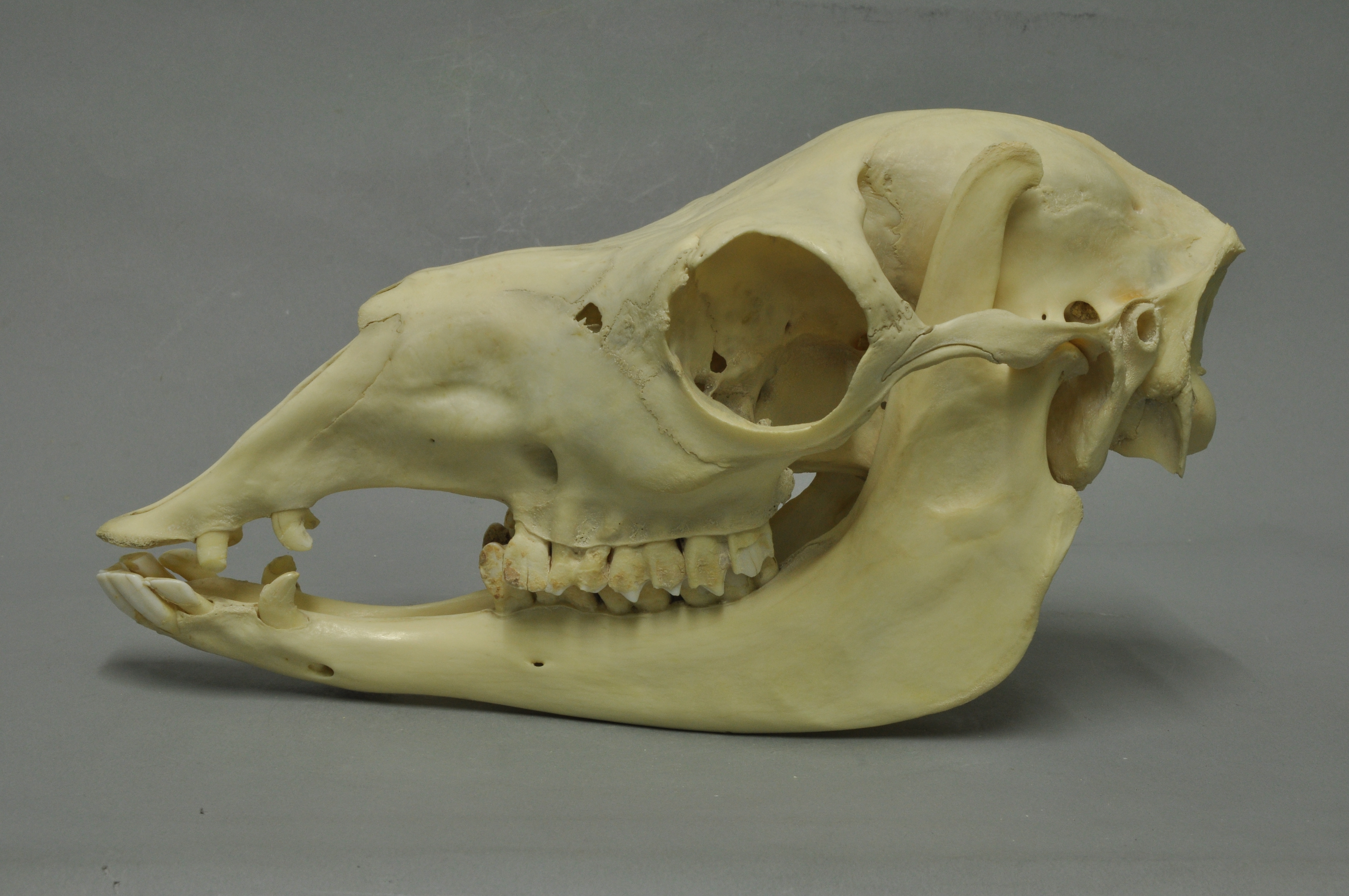|
Paine River
Paine River (''Río Paine'') is a river located in the Magallanes Region of Chile. The river rises from its source in Dickson Lake and flows east for nine kilometres (km) to Paine Lake. After flowing through the lake, the river runs for 15 km, first southward and then westward to Nordenskjöld Lake.Gobierno de Chile (2004). This part of the river's course includes the Paine Cascade. From the mouth of Nordenskjöld Lake, the river flows for a short distance falling into Pehoe Lake. In this area the river forms a spectacular waterfall known as ''Salto Grande''. Along the Paine River, and specifically in the vicinity of Salto Grande, are a variety of natural vegetation forms as well as certain wildlife species, including the wild guanaco The guanaco (; ''Lama guanicoe'') is a camelid native to South America, closely related to the llama. Guanacos are one of two wild South American camelids, the other being the vicuña, which lives at higher elevations. Etymology The ... [...More Info...] [...Related Items...] OR: [Wikipedia] [Google] [Baidu] |
Dickson Lake
Dickson Lake is a glacier lake in southern Patagonia located in the Southern Patagonian Ice Field, which since 1998 has been transformed into an international lake as it is crossed by the international boundary between Argentina and Chile due to the retreat of the Dickson glacier. Until that year, Dickson Lake was entirely within Chilean territory, at the northern end of the Torres del Paine National Park in the Magallanes y la Antártica Chilena Region, but it was unified with a lake that began to form in the 1980s by defrosting the melting of the Dickson, Cubo (or Cincuentenario) and Frías (or Grande) glaciers. That lake was on the Argentine side when the Agreement was signed to specify the route of the limit from Mount Fitz Roy to the Daudet Hill of 1998, in a sector adjacent to the Los Glaciares National Park, but without being part of it. The lake is fed by the glacier that shares its name and is drained by the Paine River. It receives the waters of Los Perros River, ... [...More Info...] [...Related Items...] OR: [Wikipedia] [Google] [Baidu] |
Del Toro Lake
Del Toro Lake ( es, Lago del Toro) is a lake located in the Magallanes Region, southern Chile. The lake is also known as Lago del Toro or Lago Toro (in English Lake Bull) and its name comes from the lake's ability to generate 4 m swells due to a long (~30 km) fetch and high winds aligned with the long axis of the lake. Locals say that the lake and the nearby mountain Sierra del Toro is named thus because the lake 'is angry a lot'. Services on the lake include camping and fishing at Bahia el Bote. See also *Cerro Toro Cerro Toro is a Cretaceous landform of the Magallanes Foreland in the Patagonian region of southeastern Chile. The Cerro Toro is an element of the southern Andes and a product of the Andean orogeny, caused by the subduction of the Nazca Plat ... * Salto Grande References Toro Lakes of Magallanes Region {{MagellanAntarctic-geo-stub ... [...More Info...] [...Related Items...] OR: [Wikipedia] [Google] [Baidu] |
Chile
Chile, officially the Republic of Chile, is a country in the western part of South America. It is the southernmost country in the world, and the closest to Antarctica, occupying a long and narrow strip of land between the Andes to the east and the Pacific Ocean to the west. Chile covers an area of , with a population of 17.5 million as of 2017. It shares land borders with Peru to the north, Bolivia to the north-east, Argentina to the east, and the Drake Passage in the far south. Chile also controls the Pacific islands of Juan Fernández, Isla Salas y Gómez, Desventuradas, and Easter Island in Oceania. It also claims about of Antarctica under the Chilean Antarctic Territory. The country's capital and largest city is Santiago, and its national language is Spanish. Spain conquered and colonized the region in the mid-16th century, replacing Inca rule, but failing to conquer the independent Mapuche who inhabited what is now south-central Chile. In 1818, after ... [...More Info...] [...Related Items...] OR: [Wikipedia] [Google] [Baidu] |
Cascada Rio Paine
Cascada (, Spanish for "Waterfall", stylized as CASCADA, CASC''A''DA and cascada) is a German dance music act founded in 2004 by singer Natalie Horler and DJs/producers DJ Manian and DJ Yanou. They are best known for their hit singles " Everytime We Touch", "What Hurts the Most", " Evacuate the Dancefloor", and "Miracle". Cascada represented Germany at the Eurovision Song Contest 2013 in Malmö, Sweden with "Glorious". While being one of the most successful acts of the dance music genre itself, Cascada was named as the 3rd most successful German act of the 21st century. In 2010, Cascada's music was the second most downloaded of all time in the dance category after David Guetta. In 2018, Cascada had more than a billion views on YouTube including over 100 million views for their hit " Everytime We Touch". Music career 2004–2005: Early career When Natalie Horler was 17 in 1998, she was doing studio work for various DJs. Eventually, she met Yanou and DJ Manian. At that time Ya ... [...More Info...] [...Related Items...] OR: [Wikipedia] [Google] [Baidu] |
Parque Nacional Torres De Paine
*
*
{{dab, surname ...
Parque is the Galician, Portuguese and Spanish word for " park", and may refer to: * Parque (TransMilenio), a metro station in Bogotá, Colombia * Parque (Lisbon Metro), in Portugal * Parque (Santurce), a subbarrio in San Juan, Puerto Rico * Jim Parque, a baseball player See also * Parquetry, a type of flooring * Park (other) A park is an area of land with a recreational or other specific purpose. Park or Parks may also refer to: Places United Kingdom * Park (Reading ward), an electoral ward of the Borough of Reading, Berkshire, England * Park (Sefton ward), an ... [...More Info...] [...Related Items...] OR: [Wikipedia] [Google] [Baidu] |
River
A river is a natural flowing watercourse, usually freshwater Fresh water or freshwater is any naturally occurring liquid or frozen water containing low concentrations of dissolved salts and other total dissolved solids. Although the term specifically excludes seawater and brackish water, it does include ..., flowing towards an ocean, sea, lake or another river. In some cases, a river flows into the ground and becomes dry at the end of its course without reaching another body of water. Small rivers can be referred to using names such as Stream#Creek, creek, Stream#Brook, brook, rivulet, and rill. There are no official definitions for the generic term river as applied to Geographical feature, geographic features, although in some countries or communities a stream is defined by its size. Many names for small rivers are specific to geographic location; examples are "run" in some parts of the United States, "Burn (landform), burn" in Scotland and northeast England, and "be ... [...More Info...] [...Related Items...] OR: [Wikipedia] [Google] [Baidu] |
Magallanes And Chilean Antártica Region
The Magallanes Region (), officially the Magallanes y la Antártica Chilena Region ( es, Región de Magallanes y de la Antártica Chilena), is one of Chile's 16 first order administrative divisions. It is the southernmost, largest, and second least populated region of Chile. It comprises four provinces: Última Esperanza, Magallanes, Tierra del Fuego, and Antártica Chilena. Magallanes's geographical features include Torres del Paine, Cape Horn, Tierra del Fuego island, and the Strait of Magellan. It also includes the Antarctic territory claimed by Chile. Despite its large area, much of the land in the region is rugged or closed off for sheep farming, and is unsuitable for settlement. 80% of the population lives in the capital Punta Arenas, a major market city and one of the main hubs for Antarctic exploration. The main economic activities are sheep farming, oil extraction, and tourism. It is also the region with the lowest poverty level in Chile (5.8%); households in Magallan ... [...More Info...] [...Related Items...] OR: [Wikipedia] [Google] [Baidu] |
Nordenskjöld Lake
The Nordenskjöld ( es, Lago Nordenskjöld or ) is a lake in Torres del Paine National Park in the Magallanes Region, southern Chile. The lake is named after the Swede Otto Nordenskiöld who discovered the lake in the beginning of the 20th century. The outfall of Nordenskjöld Lake consists of a waterfall known as Salto Grande. At this western end of the lake on the southern side is an abundance of wildlife including wild grazing guanaco.C. Michael Hogan. 2008 See also * French Glacier French (french: français(e), link=no) may refer to: * Something of, from, or related to France ** French language, which originated in France, and its various dialects and accents ** French people, a nation and ethnic group identified with Fran ... Notes References * Gobierno de Chile. 2004 ''Cuenca del Río Serrano''* C. Michael Hogan. 2008''Guanaco: Lama guanicoe'', GlobalTwitcher.com, ed. N. Strömberg* Earth Info. 2002. ''earth-info.nga.mil'' webpage Lakes of Chile Lakes of Magall ... [...More Info...] [...Related Items...] OR: [Wikipedia] [Google] [Baidu] |
Salto Grande (waterfall)
The Salto Grande is a waterfall on the Paine River, after the Nordenskjöld Lake, within the Torres del Paine National Park in Chile. In the vicinity of Salto Grande are a variety of natural vegetation forms as well as certain wildlife species, including the wild guanaco.C. Michael Hogan. 2008 See also * Lake Sarmiento Notes * C. Michael Hogan. 2008''Guanaco: Lama guanicoe'', GlobalTwitcher.com, ed. N. Strömberg* Haas Mroue, Kristina Schreck and Michael Luongo. 2005. ''Frommer's Argentina & Chile'', third edition, Published by John Wiley & Sons John Wiley & Sons, Inc., commonly known as Wiley (), is an American multinational publishing company founded in 1807 that focuses on academic publishing and instructional materials. The company produces books, journals, and encyclopedias, i ..., References External links UCAR Digital Image Library photo, Salto Grande, Chile Waterfalls of Chile Landforms of Magallanes Region Torres del Paine National Park ... [...More Info...] [...Related Items...] OR: [Wikipedia] [Google] [Baidu] |
Wildlife
Wildlife refers to undomesticated animal species, but has come to include all organisms that grow or live wild in an area without being introduced by humans. Wildlife was also synonymous to game: those birds and mammals that were hunted for sport. Wildlife can be found in all ecosystems. Deserts, plains, grasslands, woodlands, forests, and other areas, including the most developed urban areas, all have distinct forms of wildlife. While the term in popular culture usually refers to animals that are untouched by human factors, most scientists agree that much wildlife is affected by human activities. Some wildlife threaten human safety, health, property, and quality of life. However, many wild animals, even the dangerous ones, have value to human beings. This value might be economic, educational, or emotional in nature. Humans have historically tended to separate civilization from wildlife in a number of ways, including the legal, social, and moral senses. Some animals, how ... [...More Info...] [...Related Items...] OR: [Wikipedia] [Google] [Baidu] |
Guanaco
The guanaco (; ''Lama guanicoe'') is a camelid native to South America, closely related to the llama. Guanacos are one of two wild South American camelids, the other being the vicuña, which lives at higher elevations. Etymology The guanaco gets its name from the Quechua word ''huanaco'' (modern spelling ''wanaku''). Young guanacos are called ''chulengos''. Characteristics Guanacos stand between at the shoulder, body length of , and weigh . Their color varies very little (unlike the domestic llama), ranging from a light brown to dark cinnamon and shading to white underneath. Guanacos have grey faces and small, straight ears. The lifespan of a guanaco can be as long as 28 years. Guanacos are one of the largest terrestrial mammals native to South America today.San Diego Zoo's Animal Bytes Other terrestrial mamm ... [...More Info...] [...Related Items...] OR: [Wikipedia] [Google] [Baidu] |




.jpg)
